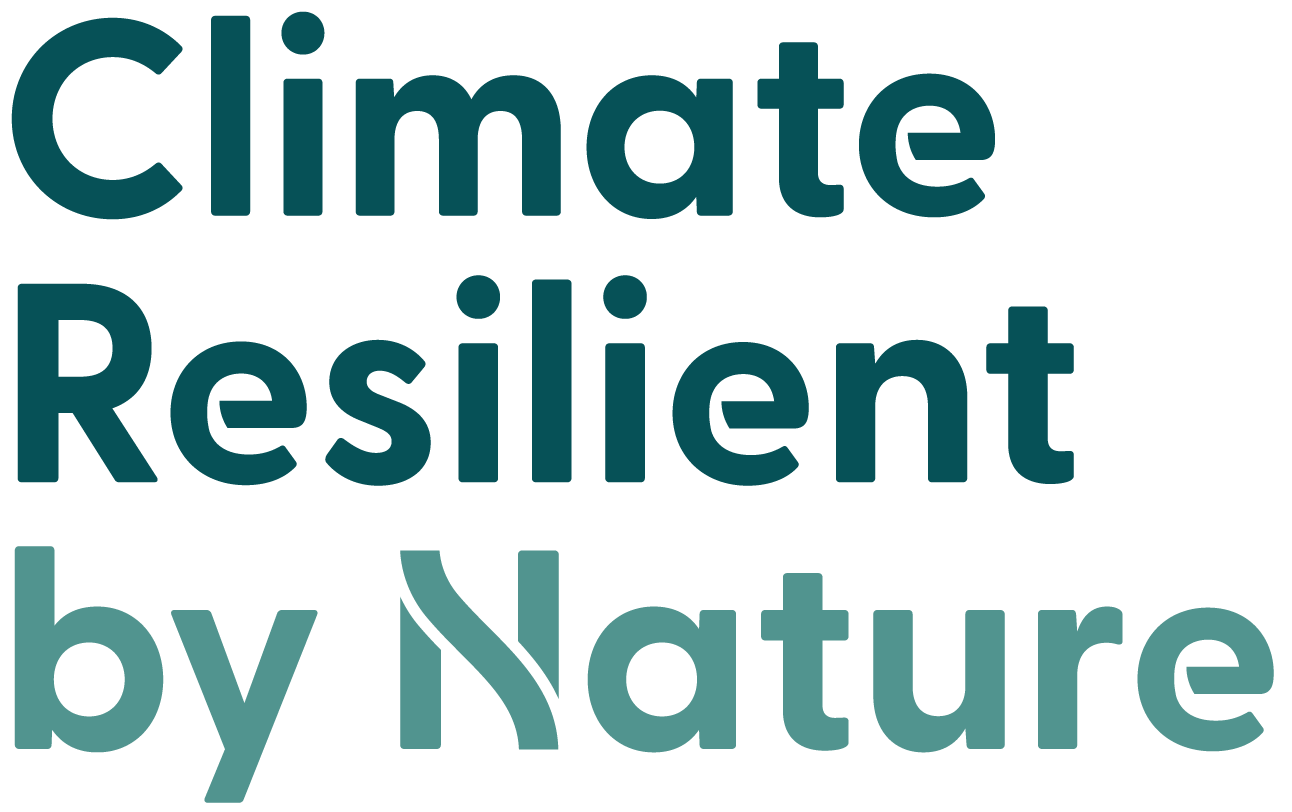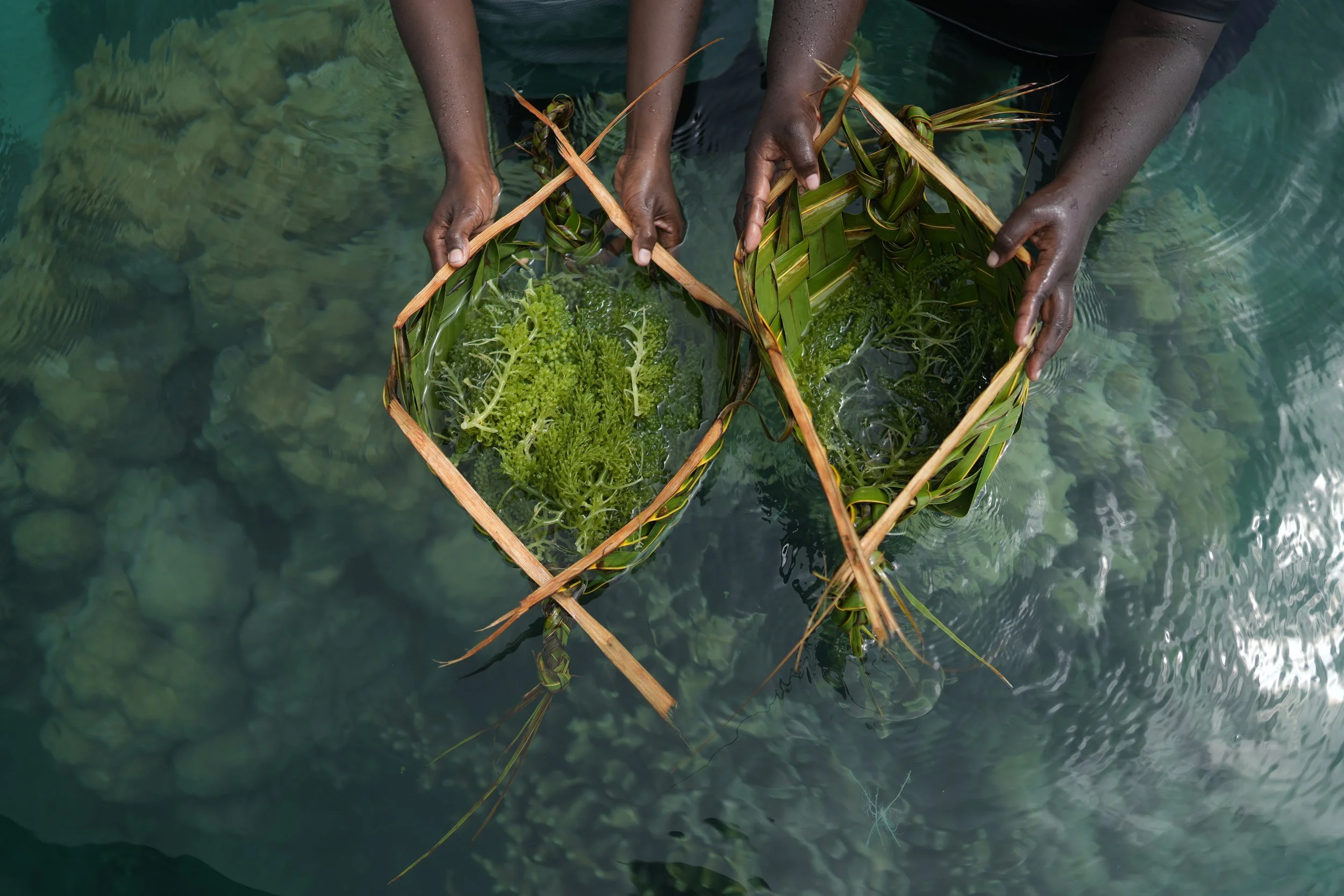Blue food systems as a Nature-based Solution for Climate Resilience
Blue foods are sourced from freshwater and marine ecosystems - such as mangroves, reefs, seagrass meadows and kelp forests - as well as aquaculture. They can include anything from fish to shellfish, plants and algae.
Blue foods are often associated with large-scale fisheries and production. However, our focus is on community-led and managed blue foods.
This is because blue foods are a critical part of Pacific diets, culture and livelihoods. They offer an important source of protein and income for coastal communities and have traditional and cultural significance. In the Pacific, many traditional practices and activities surrounding blue foods support a number of these outcomes and can already be considered nature-based solutions (NbS).
As a result, blue foods support a mix of food security and livelihoods, conservation and climate resilience outcomes. However, delivering these outcomes equally is challenging. Blue foods systems are complex, with a great depth of cultural, social, economic, dimensions to consider. By applying systems thinking we can better understand and manage the linkages between these outcomes, and their trade-offs so we can support community-led NbS that deliver equitable solutions and impact.
Let’s dive in.
What is systems thinking?
We can understand blue foods as a ‘complex’ system
This involves looking at the whole system and its rich web of interrelated economic, ecological, social and cultural drivers that influence how our food is grown, processed, distributed, consumed and waste managed.
This holistic view can help identify feedbacks, emerging behaviours and trade-offs.
Mapping feedback loops - that is, where changes in one part of the system can influence other components - can help pinpoint opportunities for transformation that can guide more adaptive and equitable blue food interventions.
Case study: Mangrove rock oysters
Rewa Province in Fiji has the largest area of connected mangroves. In Muanaira Village, these mangroves provide habitat for a diversity of species including mangrove rock oysters which also offer a source of income to communities. Climate change impacts are also being felt in Muanaira including rising sea levels, intensifying tropical cyclones, and associated storm surges present challenges for food security and livelihoods.
Communities in Muanaira were identified as the key stakeholder when it comes to local blue foods systems. This is because marine tenure in Fiji is largely customary owned and managed. However community stakeholders naturally interact with other subnational, national and international actors in the system. A systems thinking approach investigated these interlinkages, influences and trade-offs to see how communities prioritise the various outcomes of blue foods.
Mangrove oyster farming was found to be largely driven to support food security and livelihoods. Community awareness of the importance of mangroves was high, and proactive efforts were made to protect and conserve mangroves including through marine protected areas (MPAs), given the health of the ecosystem has direct benefits to livelihoods.
Identifying these priorities through systems thinking also allowed the community to explore what they saw as limitations and opportunities. Limitations included the need for market and business development skills to scale activities and livelihood opportunities.
The climate resilience benefits of mangrove oyster farming was not a driver for maintaining the habitat, and climate change in general was not a dominant focus of the workshop conversations. This points possibly to the role of other actors to bridge the gaps between national actors and directives and everyday realities of rural communities
Takeaways
Blue foods system thinking can help deliver more adaptable and equitable solutions.
Multi-generational understandings of ecosystems and societal change in relation to how blue food systems are managed must be included as growth in NBS investments and policy focus continues.
No system is perfectly balanced. Understanding the how feedbacks and processes influence change can help design interventions that manage the trade-offs and linkages in a system.
The systems approaches combined with participatory community engagement, can help support informed decision-making and collaboration to maximise conservation, livelihoods and food security, and climate resilience outcomes.
Read the report
As blue foods gains big interest, learn how we can best harness this to deliver benefits for people and nature.





